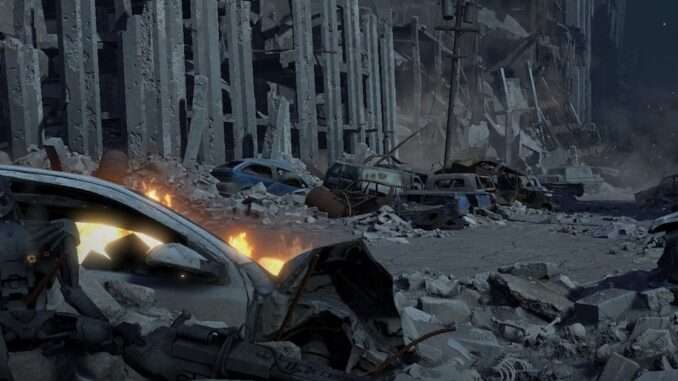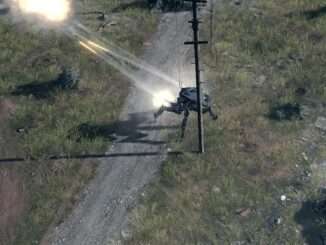
Official Tips for Supply Management
Devs have seen lots of posts about players struggling with the management of resources and supplies, once you reach the Strategic Map. With supplies needed to travel from settlement to settlement, it is important to manage your army efficiently.
So, devs are looking to have a tweak to the supply requirements in an upcoming (soon) update that will make supply management less harsh (in certain circumstances, such as chosen difficulty levels). Devs will update you more when this will be available.
In the meantime, here are some points from the Supply Management tutorial screen within the game:
- Every day of moving your army consumes supplies. See the amount of Supply you have and the amount you need per day on the upper right side of the screen. There’s also information about how many days your army can travel with this amount of Supply. When you choose where to travel, you’ll see how many days it will take.
- Each unit in your army has daily Supply consumption. Manpower also has daily Supply consumption (100 per person). Total consumption is the sum of these values. Decrease daily Supply consumption of your army by dismantling or disbanding your units and getting rid of Manpower. You can do this at any point on the Strategic Map.
- In settlements where there is the opportunity to trade, the best way to maintain a balance of resources is to sell trophies and extra squads and buy Supplies using the received Goodwill Points.
So, in conclusion, to stop you coming stuck with a force that you cannot move, you need to manage who you keep and who you let go. Devs have tried to simulate the feel of struggling to survive in this Post Judgment Day world. It isn’t just a case of building a huge force and moving from settlement to settlement, because that will likely mean running out of resources at some point.
And I know it may be hard giving up that Bradley you found, or those 20+ militia squads that could back you up, but they need to be fed and fuelled, and may stop you reaching your destination.
To try to have a positive and useful discussion below, can players who have positive tips they have found on Army Management post them below, so this discussion can help T-Force fight back against the Machines.
Some interesting information from a dev-team member that I thought I’d share:
Target Supply Consumption:
- After Abiquiu – 40 thousand per day
- After Albuquerque – 45-50 thousand
- After Tortuga – 50-55 thousand
- After Chihuahua – 65 thousand
- After Vega – 70 thousand
- After Oklahoma – 75-90 thousand
If the player sticks to this army size, then they will not have any problems with resources. These are the current balance values. If the player does not collect a horde and does not exceed these values, then they will always have resources for upgrades, restoration of ammunition, repairs, training, etc.
If it exceeds, then they will have all resources spent on moving the army from place to place.
Hope this helps!





I don’t usually post on these kinds of discussions, but wanted to say there are a lot of different paths to a successful army. I took the army management part of Defiance more analogous to in mission base building in most RTS’s. The supply mechanic immediately read as a force limiter when it showed up after Haven. It prompted me to scavenge everything I can from battlefields to sell so I can keep higher supply levels.
I didn’t take the Abrams or Bradly, but kept the Stryker and the Movement artillery. After each mission I disband and sell anything that doesn’t fit with my core force and doesn’t have experience or special abilities. That’s kept me going pretty good with a force made up of technicals I’ve upgraded to have better weapons and infantry I’ve picked up along the way.
I do think that it may be a bit too harsh and adds one more thing to micromanage that takes you away from actually playing the game, especially if you don’t watch it carefully. Even a 10% reduction in supply use per unit or ability to passively generate supply from faction relations would be enough to make it less tiresome.
One thing that struck me as potentially helpful would be some form of indicator with supply consumption that could help players understand if they are over extending. On a first play through, you probably won’t know how many days travel it is between regions and that can easily lead to over extending your supplies and creating a death spiral where you have to disband so many units that you no longer have a force that can complete missions.
The main positive tip I can give is that new players should ~never~ give in to attach themselves to the abundance of units found during missions. Those are just trading goods.
What you want to keep is the Abrams and the Bradley one can find very early. Those are needed and the basis of your army. Without them, you stand no chance against the tougher enemy units.
Don’t bother with fuel and supply vehicles and never have more then one infantery squad of every type of your starting faction. Decide between the Striker and the HumVee and pick only one. (I’d go for the Striker because smoke grenades).
Don’t bother with the fancy truck and armored trailer – those are noob traps.
Use the first level-ups of your infantery to reduce their supply costs.
You can start experimenting with the new units from the movement faction if you feel like having total control over the supply scarcity. Which might be after 6-7 campaign missions.
Until then all captured vehicles and joining squads are just a trade commodity.